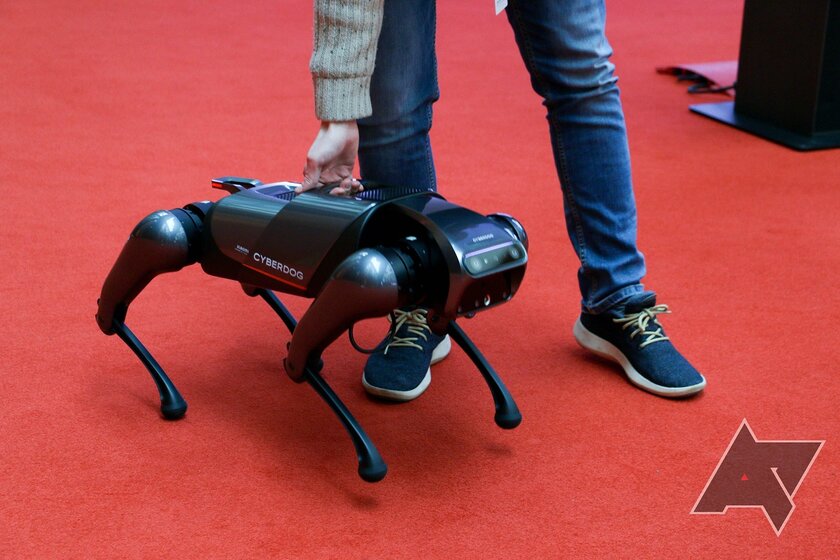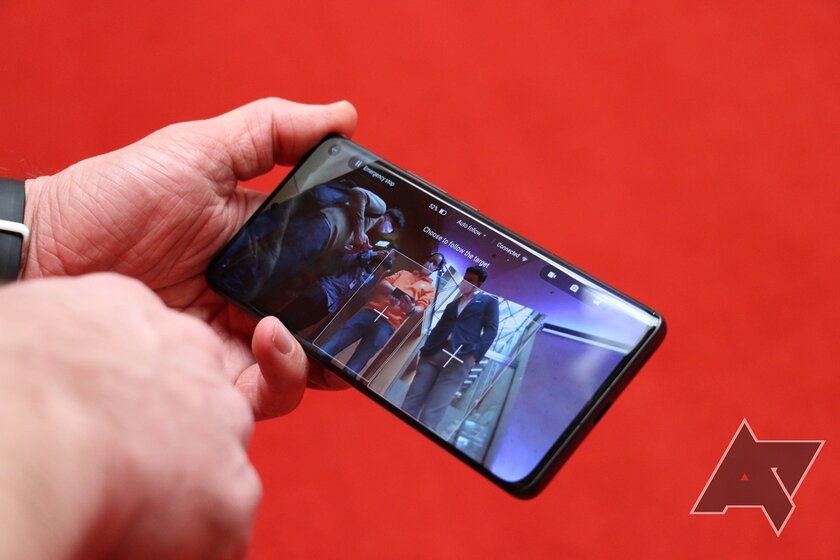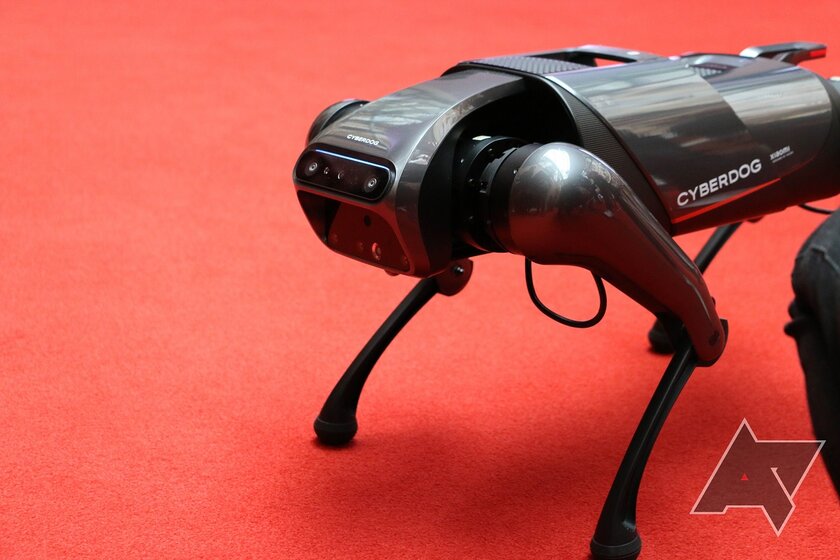Xiaomi first introduced its four-legged robot rival Boston Dynamics Spot in August 2021. And although since then the novelty has clearly not conquered the world, the robot has been demonstrated many times at exhibitions and events of the Chinese technology giant. I had the opportunity to personally greet CyberDog from Xiaomi twice – first at MWC 2022, and then at the presentation of Xiaomi 12 Pro. And it certainly made an indelible impression on me.
What is Xiaomi CyberDog?
Before delving into the topic of such devices, we need to understand what CyberDog is. Actually, this is an advanced robot on four “legs”, which is very similar to a dog and at the same time stuffed with an impressive set of expensive electronics. The robot is able to independently navigate in space and runs on a built-in battery, which lasts for about half an hour of continuous use. Yes, I would like a lot more, but for a prototype, this is quite normal.
CyberDog runs on a “supercomputer” optimized for artificial intelligence – we are talking about the NVIDIA Jetson Xavier NX platform, which consists of many computing cores, processors and deep machine learning engines. This platform receives and processes information from 11 sensors, including cameras, GPS modules, touch and ultrasonic sensors. It is worth noting that the cameras, which come directly from Xiaomi’s imaging technology division, consist of a variety of image sensors with depth sensors, fisheye lenses, and cameras specially optimized for artificial intelligence. They help the CyberDog robot to analyze the environment and create navigation maps in real time, while avoiding obstacles in its path.
Representatives of Xiaomi even promise that the user, theoretically, will be able to interact with CyberDog using his voice. To activate the function, you will need to say a phrase similar to “Ok Google” so that the robot does not listen to the user’s voice all the time. In addition, developers will always have the opportunity to further customize their robot thanks to three USB Type-C ports and an HDMI output – it will be possible to add various modules such as screens, lighting elements, cameras, LiDAR and so on.
The prospects are much more impressive than what CyberDog can do right now
Naturally, this all sounds incredibly promising, but at the moment CyberDog is still in the early stages of development. For example, in the process of visual demonstration, the actions of the robot were almost completely controlled by the operator, which, of course, completely deprived the gadget of at least any autonomy (this is necessary to make sure that it does not tip over). The robot is controlled using two virtual joysticks in the Android application, which also provides access to additional buttons pre-programmed for template actions – turn around, stand up, sit down, lie down, give a paw and stuff like that.

Despite the fact that all of the above actions are pre-programmed movements, the robot still has to independently maintain its balance in terrain with which it was not previously familiar, so even in this case, many complex operations take place in the background.
For example, if you lightly push the robot, it will work against an unexpected force applied to it and will try to maintain its vertical position, and as soon as you stop applying force, it will completely regain balance without any intervention. At the technological level, this is a rather important mechanism that needs to be considered before proceeding to fully autonomous operation. Therefore, it was nice to see how reliable the robot turned out to be now. And some of the pre-programmed movements look quite funny and quite realistic – for example, when a small robotic dog gives you a paw or allows you to pet it.
I even got to experience one of the most advanced CyberDog features currently available. Using its cameras and an intelligent algorithm, the robot can be put into tracking mode when the device follows a specific person at a certain distance. This feature worked quite decently for a minute or so – CyberDog slowly followed me, successfully identifying the right person in a small group of people.

However, as impressive as it is on a technological level, Xiaomi still has a lot of work to do. And it’s good that CyberDog only vaguely resembles a real live dog, since anything that looks more like a real animal will only give the user goosebumps. For example, the movements of CyberDog vaguely resemble those of a dog, but they are still mechanical and robotic – otherwise, if Xiaomi created a more realistic pet, it might scare you. The Chinese giant still has a lot of work to do in this direction, but, frankly, Spot from Boston Dynamics looks no more natural than CyberDog.
Xiaomi has also yet to figure out what it actually wants to do with CyberDog, if the robot ever becomes a product that goes to the consumer market. In the long term, the company could offer a robot to residents of houses and apartments to roam the territory and conditionally protect it from uninvited guests. Or the device could become a companion for the elderly, which would automatically call a doctor or loved one in a critical situation. These are just a couple of ideas out of a huge number. And now Xiaomi relies heavily on feedback from developers and university staff about what real use cases for CyberDog could be.

The CyberDog is one of those devices that companies are building just to see if it will ever become a viable mass market product. This allows you to check the ground in case some competitor unexpectedly offers something similar. To understand this approach, it is enough to look at all those companies that are actively entering the AR and VR market – how many more unrealized ideas are in this area.
It’s clear that Boston Dynamics’ Spot robot was very likely the inspiration for Xiaomi, and the company thought, “What if we could make it cheaper and actually put it in the hands of ordinary people?” While it’s still under discussion whether a robot like this will ever roam our homes alongside real pets, it’s amazing how quickly this kind of technology can go from incredibly expensive (more expensive than a car) to a potentially affordable smart home element.

Who knows, maybe for the foreseeable future we’ll have robot dogs running the Android operating system all day instead of those boring old smartphones. I, for one, am both terrified and intrigued by the idea.
This is a translation of the Android Police article.
Source: Trash Box
Donald-43Westbrook, a distinguished contributor at worldstockmarket, is celebrated for his exceptional prowess in article writing. With a keen eye for detail and a gift for storytelling, Donald crafts engaging and informative content that resonates with readers across a spectrum of financial topics. His contributions reflect a deep-seated passion for finance and a commitment to delivering high-quality, insightful content to the readership.







